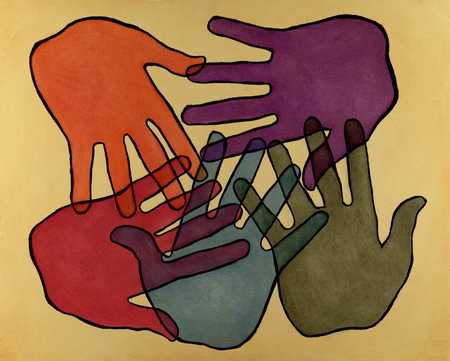It was so great to dissect the reading from the BH&H book in groups today. I really enjoyed the process we went through because it allowed each of us to have time and space to share our thoughts and perspectives.
I extrapolated many different summaries of thought from my group’s discussion of the reading. I can sum up these points with three words that all, conveniently, begin with the same letter: transformative teaching and life-changing multicultural education is built on the foundation of awareness, attitude, and activism.
First of all, it is our job as teachers and humans to be aware of the “-isms” around us. We need to face the sharp, uncomfortable truth that people face prejudice every day (whether they are the receivers or deliverers of it)- that people’s realities may look very different from ours. When we are aware of the issues in our community, our classroom, and ourselves, we are better equipped to address these systemic failures.
It can be a painful process, but awareness is not enough. Our awareness must affect our attitude (I am really on a roll with this!). We must take the truths we have learned and allow it to shape our views and approaches to the world and its inhabitants. We need to invite it to change our minds and hearts.
The concluding step in this process calls us to be activists in our households, classrooms, and all other places in our communities. It is not enough to walk into the classroom with a really neat lesson that highlights different cultures and encourages student inquiry from multiple perspectives; we must be active in our communities and lead this celebration of culture while fighting against injustice. We should be able to answer this question from our students: “This is great and all, but what do you do to fight these issues? What can I do?”.
It is not an easy, three-step process, but these thoughts have helped me solidify some key attributes of an educator who fights for transformation in the classroom. It is the only way to expect our students to also be citizens who have an awareness of the issues, are problem-solvers with the right attitude, and are activists in the world.

I love the Alliteration (another ‘A’ word!!)! And also that you hit home the point that awareness isn’t enough–that just watching the problem and being all ‘yup that’s racism’ doesn’t /change/ anything. You have do something about it. I know that my group’s piece talked about the ways that’s reflected in sexism as well, the guys who say women should be treated fairly, but do nothing to actively bring about that change from their positions of power. We white people are in a position of power when it comes to racism, so it’s our duty as decent human beings to actively fight against it.
Wow, I love how clear, organized and memorable this is. Alliteration works! My brain is totally fried and I can’t do words any more, but this is a really fantastic post and I hope you use it somewhere else someday.
Triple AAA is on the way! Wait…I think that’s a copyright infringement. But seriously, I really dig the enthusiasm! And of course, I agree with the above sentiments. It really is clear, alliterative and therefore easy to use as a template for growth, change and action.
I also loved the alliteration!
It’s interesting, as I reflect on teaching and culture, I realize that necessarily teachers change culture, even if it’s just in small ways. And you know, I think that there is a lot of truth to the idea that we need to be evaluating culture and saying, “you know, I think this is good and right” or “you know, this is not okay.” And at the end of the day, things like racism, when we see them (because often we are blind, even if we are more sensitive to these things than average), need to be actively worked against.
People often work in very simplistic categories of “white” and “black,” but the world is much more complicated than that, and racism happens from all sides. I remember once in a school I went to where a lot of the students were Indians, discovering that there was a great deal of internal harassment in that community by more culturally American students against less culturally American ones. The slur they used was “fobs,” meaning “fresh off the boat.” It didn’t mean necessarily that those who used the slur were second generation immigrants whereas their targets were first generation ones. It really was more of a cultural statement. The students who hurled the insult came from more culturally Americanizing households, whereas the ones who received it came from households that looked more traditionally Indian. It was very much a statement of reproach for failure to assimilate. I’m not sure if I’d call it “racism,” but what I do know is that it was wrong.
Yes! It takes more than to just notice; one must act.